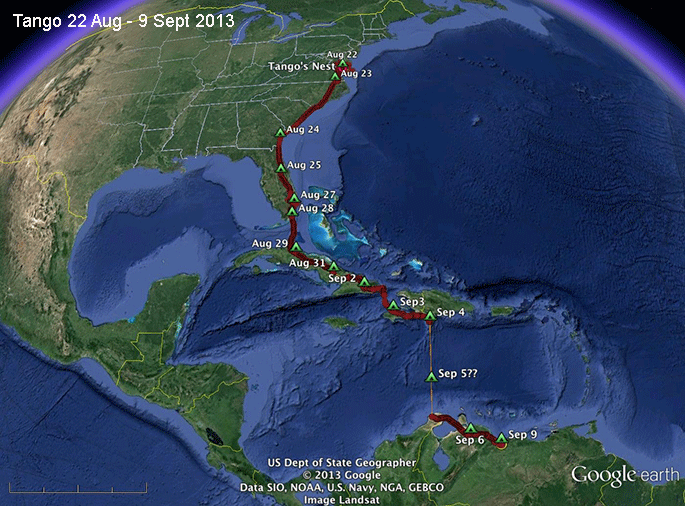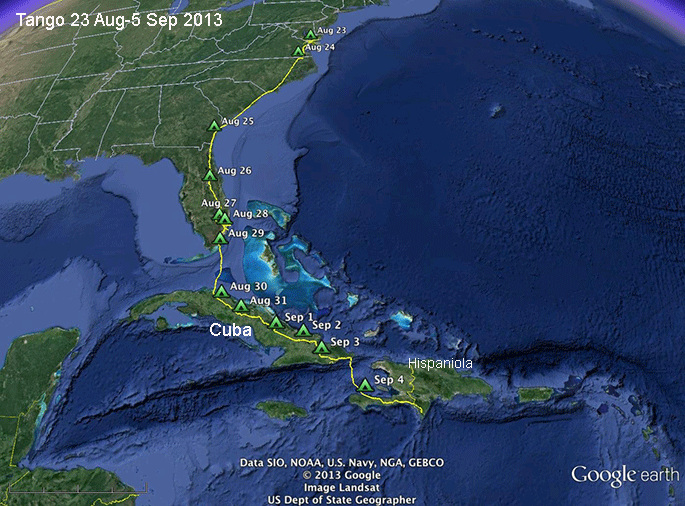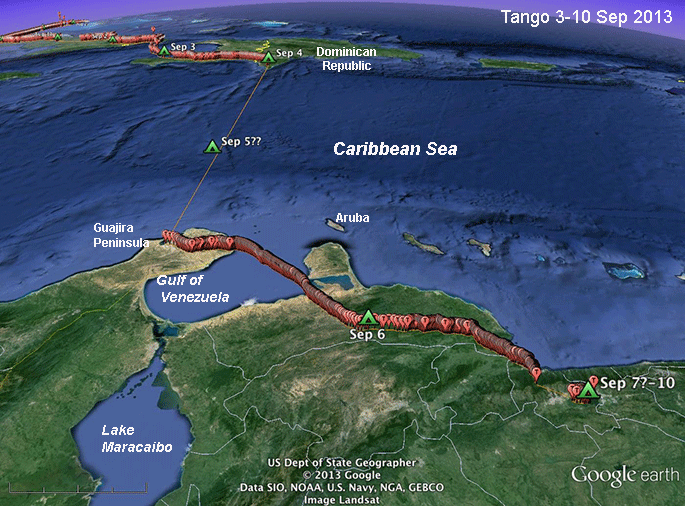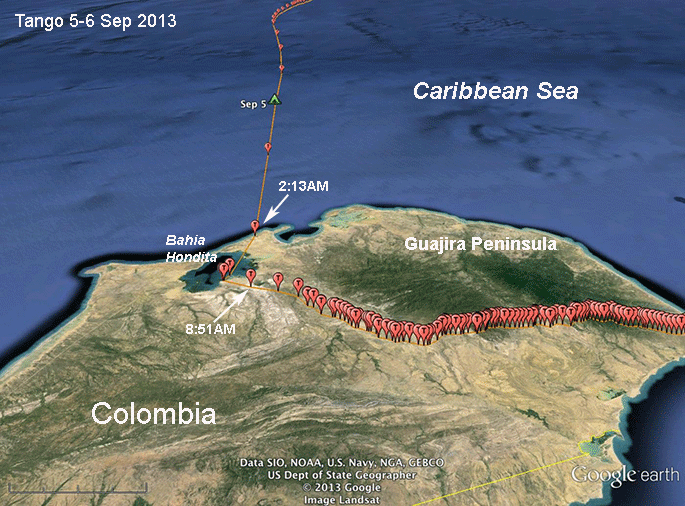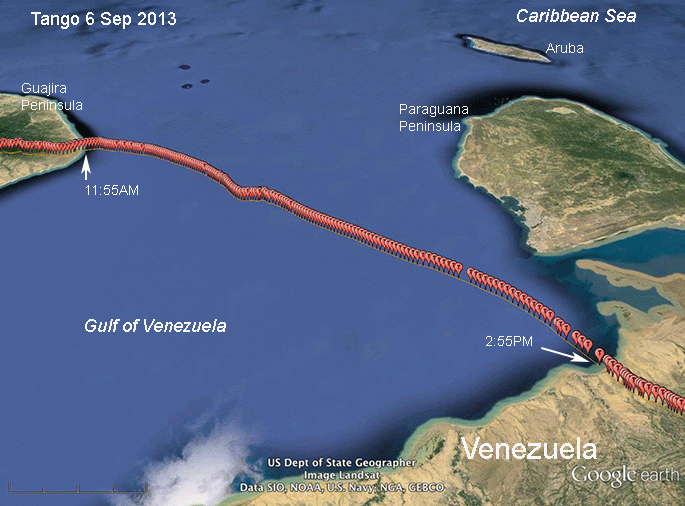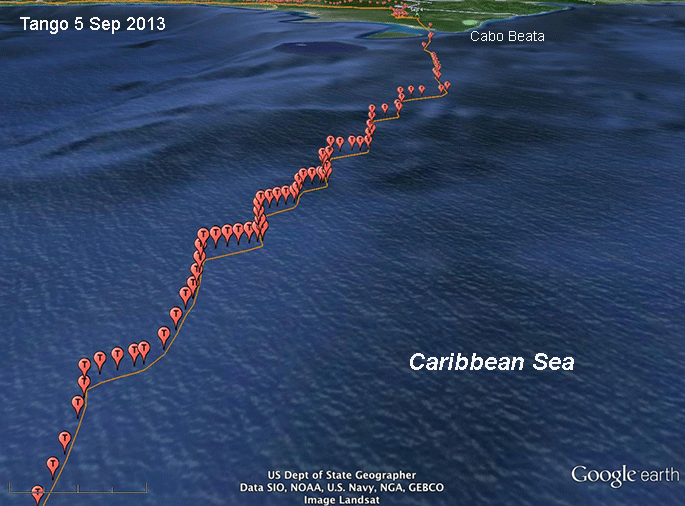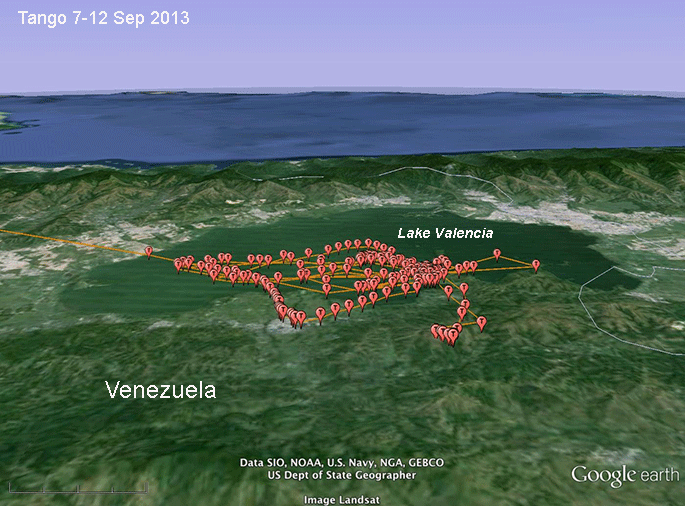This map is out of sequence, but it's the way we got the data. Tango's first download from Venezuela didn't have the locations for his Caribbean crossing. A few days later we got his data for his trip from the Dominican Republic on Hispaniola to the Guajira Peninsula in northeastern Colombia.
The trip was 370 miles (600 km) and could not have been any shorter. It took Tango just a bit more than 14 hours, at an average speed of 27 mph (42 kph).
The really cool thing about this track is that it documents him tacking back and forth as he heads south over the open water. When we look at the altitude data, we see that on each of the westward zigs he gained an average of 576 ft (189 m) in an average of 5 minutes. He then turned southeast and coasted down before tacking back to the southwest, climbing again.
We need to get the wind data to understand the dynamics of what he was doing, but it's something that's never been documented in an Osprey crossing open water before!

